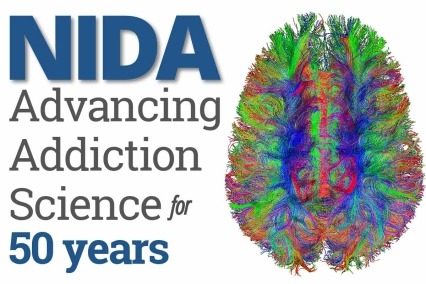
In 2024, NIDA celebrates its 50th anniversary. On May 14, 1974, an act of Congress established the National Institute on Drug Abuse (NIDA), and since then NIDA has led the world in funding and conducting research on drug use and addiction. NIDA research has been instrumental in shifting the mindset of medicine and the public from viewing addiction as deviance toward understanding it as a health condition that is preventable, treatable, and deserving of compassion and support.
Our Institute was founded just three years after Richard Nixon declared that drug abuse was “public enemy number one”—rhetoric that powerfully reinforced the stigma against people with addiction and punishment as the solution. At that time, people with addiction were often regarded, including by many healthcare providers, as morally deficient and weak-willed, and addressing the nation’s drug problems was thought to be mostly a matter of policing. We knew very little about the neurobiology of drug effects or how the brain is changed by addiction. There was little in the way of effective prevention, and the only drug addiction treatment available was methadone. Harm reduction for illicit drug use was not part of the public discourse.
Much has changed in 50 years. NIDA’s investment in basic science has given us detailed knowledge of the neurobiology of reward and reinforcement, the genetics of addiction vulnerability, and the environmental determinants that can worsen or mitigate that vulnerability and that the mechanisms by which they exert their influence. We now understand the ways that the brains of susceptible individuals can be reshaped by drug use and the consequences this can have in their emotions, cognition, and self-determination along with the suffering that addiction entails. This scientific understanding has made it possible to approach addiction as a medical condition and a matter of public health.
The knowledge generated by NIDA research has also led to a robust and rigorous science of drug use prevention. Researchers have leveraged knowledge of risk and protective factors to design effective comprehensive intervention programs to prevent the onset of substance use and its progression to addiction in adolescents and young adults. Some of these interventions, like Strong African American Families, have shown benefits in mitigating the neurodevelopmental impacts of poverty; some, like Raising Healthy Children, have even shown benefits for children of the individuals who received the interventions.
Shifting toward a medical framing of addiction has also facilitated public-private investment in medication development, and the implementation of policies that have integrated care for people with substance use disorders into mainstream healthcare. The Drug Abuse Treatment Act of 2002, for instance, enabled the newly approved medication buprenorphine, developed through NIDA research, to be prescribed by regular physicians if they obtained a waiver. In 2008, the Mental Health Parity and Addiction Equity Act required insurers to provide benefits for substance use treatment to the same extent they cover other forms of mental health care. During COVID, the ability of clinicians to provide addiction care via telehealth was expanded and the waiver requirement for buprenorphine was removed, further increasing the pool of potential prescribers.
Beginning with the AIDS epidemic of the 1980s and the later discovery of HIV and the emergence of antiviral treatments, addiction research funded by NIDA and other NIH institutes revealed the interdependency of drug use and infectious disease, and research funded by NIDA’s HIV Research Program (originally, the AIDS Research Program) led to the paradigm of treatment as prevention and other scientific breakthroughs.
But we still have a long way to go.
The United States is experiencing the worst drug overdose crisis in its history, with 110,000 people now dying annually. Unfortunately, even though we have effective tools to prevent and treat substance use disorders, they are not deployed widely enough. And even if medical science has changed its views on addiction, policies and social structures have been slower in following the science toward a public health-based approach.
Substance use prevention interventions that are effective as well as cost-effective are not widely implemented. Evidence-based addiction treatment remains unevenly distributed and, for some, hard to come by. Racial inequities make it much harder for Black people and other underrepresented groups to access effective medications. People in rural communities may have particular difficulty accessing care.
Most of the fatal overdoses each year involve opioids. Opioid use disorder is treatable with one of the three FDA approved medications, buprenorphine, methadone, and naltrexone, but currently only 18% of people who could benefit from these drugs receive them. Providers who could prescribe buprenorphine still do not, potentially from a lack of confidence in treating SUD, stigma, or inadequate reimbursement. More than a half century after its FDA approval for opioid addiction, methadone is still only obtainable through specialized clinics, despite evidence that it could be dispensed much more widely—and still safely—in doctor’s offices or via pharmacies. We still do not have medications to treat other drug use disorders such as addiction to stimulants, which are involved in increasing numbers of overdose deaths, or addiction to cannabis, regular use of which is increasing as a function of its legalization by most states.
NIDA is committed to addressing these challenges. Our dramatically expanded medications-development program is looking at many promising new compounds and drug targets, including potential pharmacotherapies for methamphetamine addiction. We are also funding a range of other novel treatment approaches including immunotherapies (vaccines and monoclonal antibodies) and noninvasive neurostimulation that could one day make addiction a thing of the past. And we are investing in research on alternative endpoints to abstinence, such as reduced drug use, as a clinically meaningful treatment outcome, which could lead to a wider range of medications to help people with substance use disorders.
Over the past several years, NIDA has also greatly increased its funding of implementation research, finding ways to overcome attitudinal and structural barriers to SUD prevention and treatment, and to expand access to care where and when people need it such as in emergency departments, primary care, and justice settings.
A large percentage of people in jails and prisons have an untreated substance use disorder, often an opioid use disorder, and a shocking percentage fatally overdose upon their release due to lowered tolerance, coupled with the dangers of fentanyl in the drug supply. NIDA’s Justice Community Opioid Innovation Network (JCOIN) is testing models to prevent these deaths by initiating treatment during incarceration. JCOIN studies have shown that both overdose deaths and recidivism could be reduced by providing medications while in prison and ensuring continuity of treatment after release. Increased access to treatment could thus reduce crime in addition to saving lives.
Through our Racial Equity Initiative, NIDA is funding research and capacity building efforts to address racial and other health disparities. The Native Collective Research Effort to Enhance Wellness (NCREW) program is a new initiative that is partnering with Tribal organizations to address opioid misuse and improve pain management in Native communities in ways that incorporate indigenous knowledge and expertise.
People with substance use disorders deserve care even if they are not ready or able to seek treatment. NIDA’s Harm Reduction Research Network, now just over a year old, is exploring new ways to prevent losing lives to overdose in ways that go beyond providing medications or behavioral therapies. The approaches investigated through this network have the potential to add to the enormous benefits of existing harm-reduction approaches like naloxone distribution and overdose education and syringe-services programs.
A half century after NIDA was founded, the science of addiction has ushered in an understanding that we can no longer view people who use drugs in oppositional and punitive terms. The failures of that mindset—the inefficacy of punishment at mitigating addiction and its consequences, its exacerbation of racial and other health disparities, and its creation of stress and trauma for communities—have been well documented. People who use drugs can be allies in the scientific search for solutions, and this must be recognized by addiction science. An important component of developing effective solutions must be a community-engaged approach to science that regards people with lived and living experience of drug use and addiction as research partners with valuable expertise.
As important as the scientific and technological developments NIDA has funded over its first half century are the cultural shifts that research has fostered and will continue to foster: moving beyond stigma toward compassion and with it, improved care.
Dr. Nora Volkow, Director
Here I highlight important work being done at NIDA and other news related to the science of drug use and addiction.




